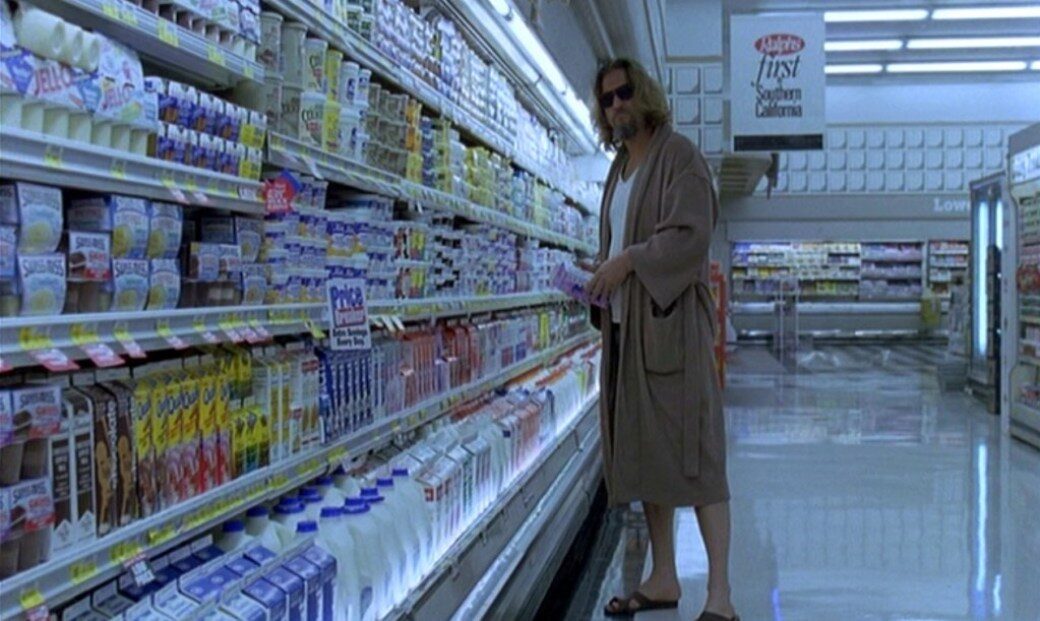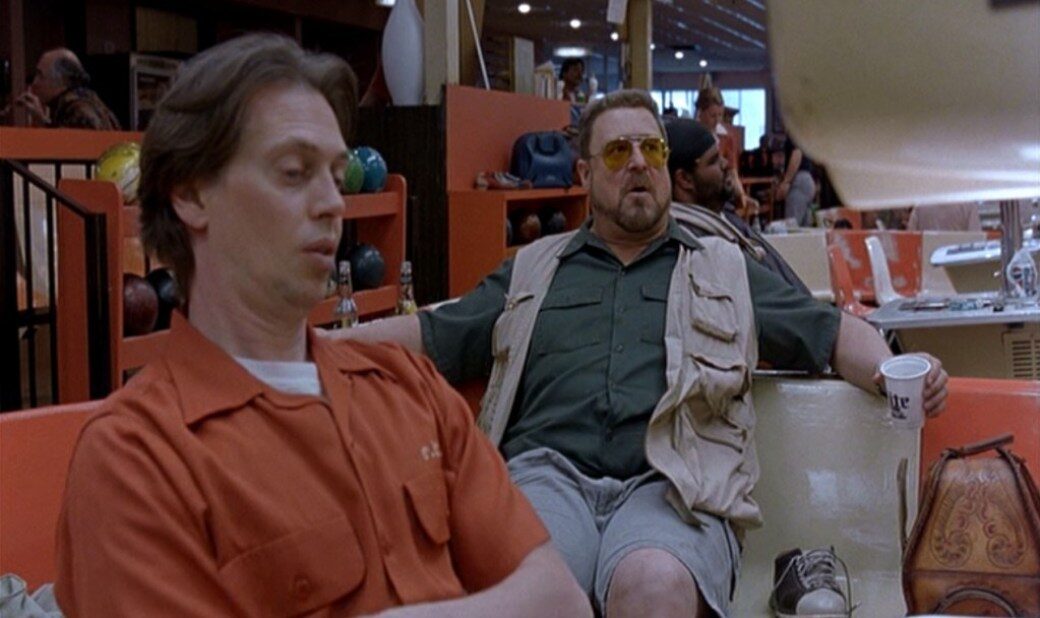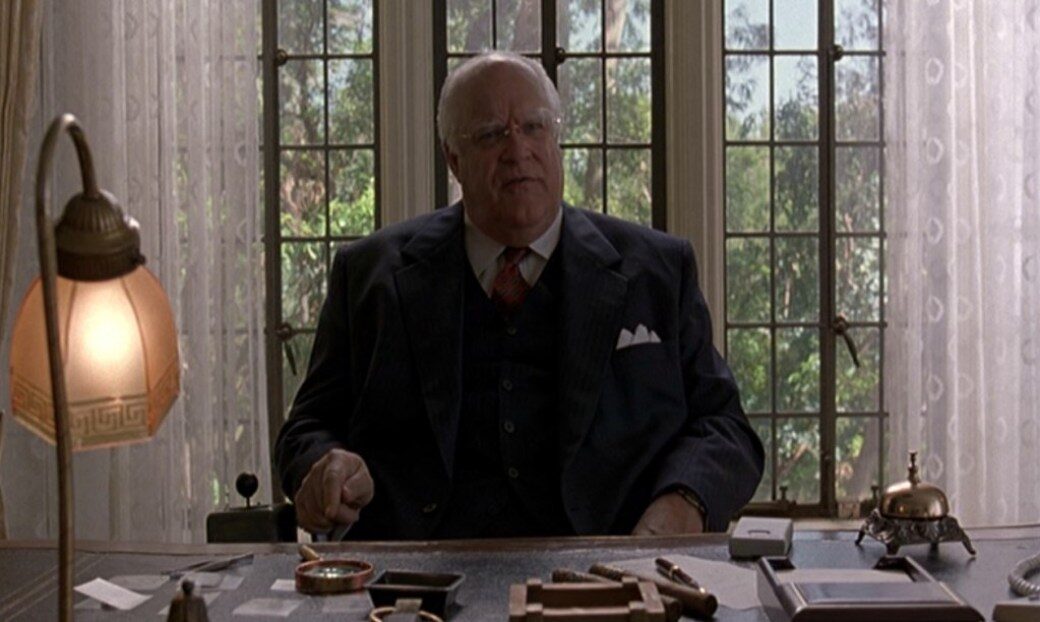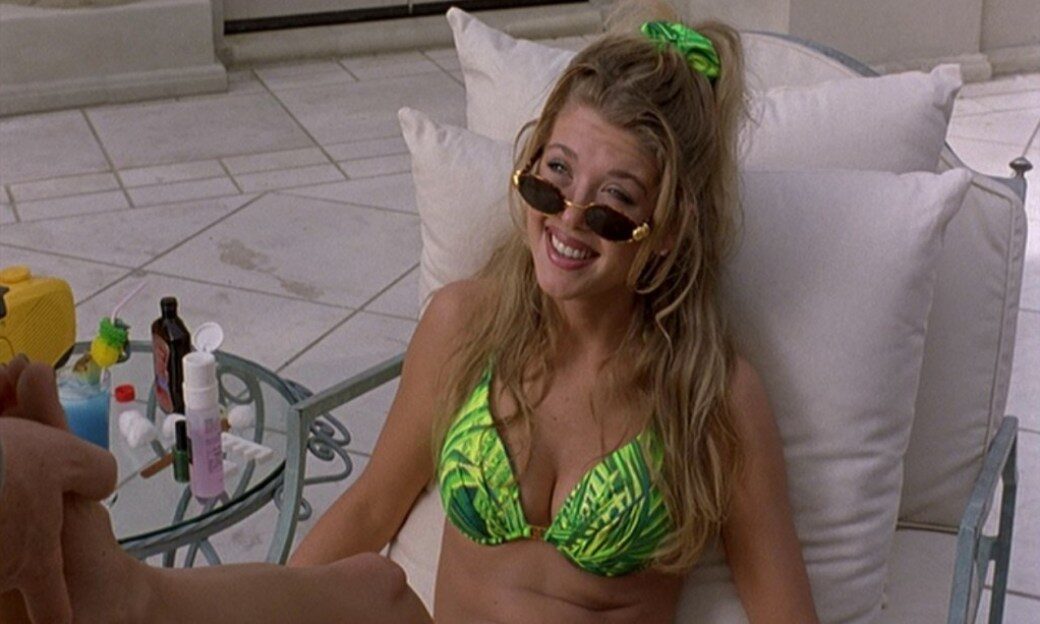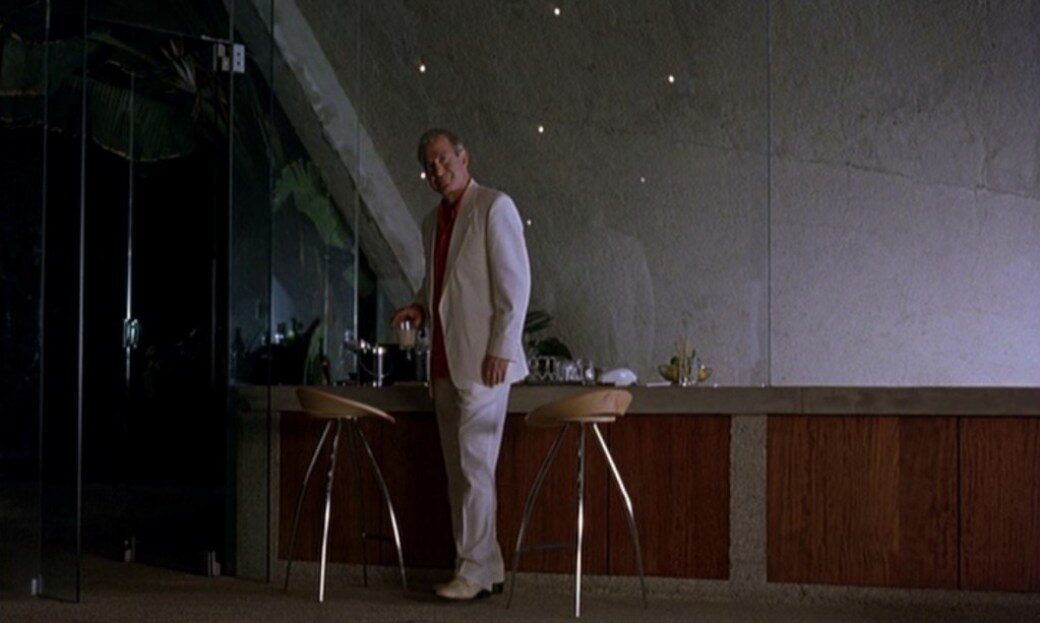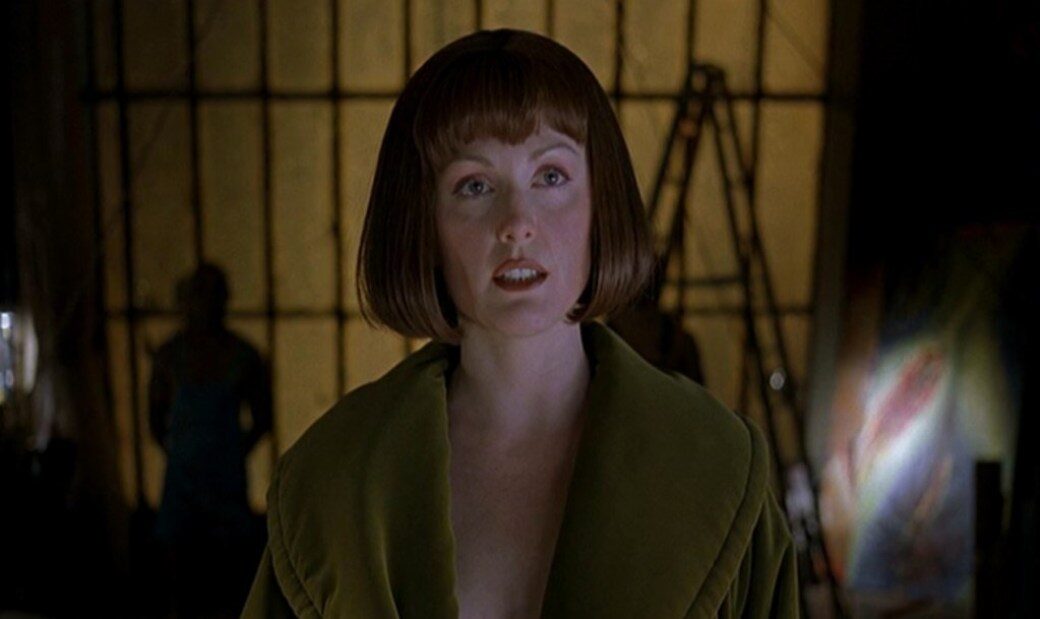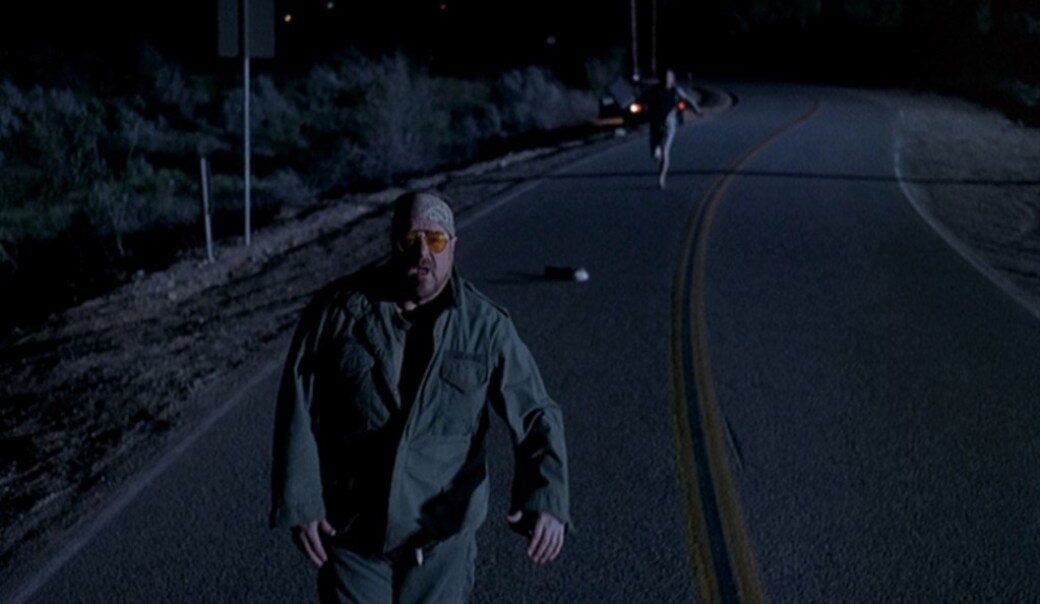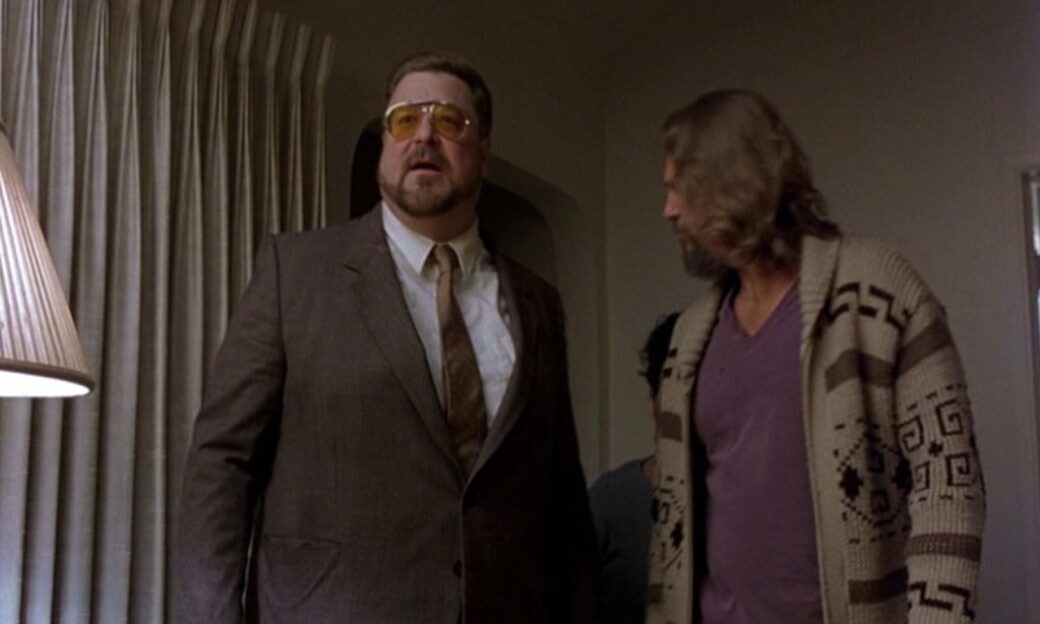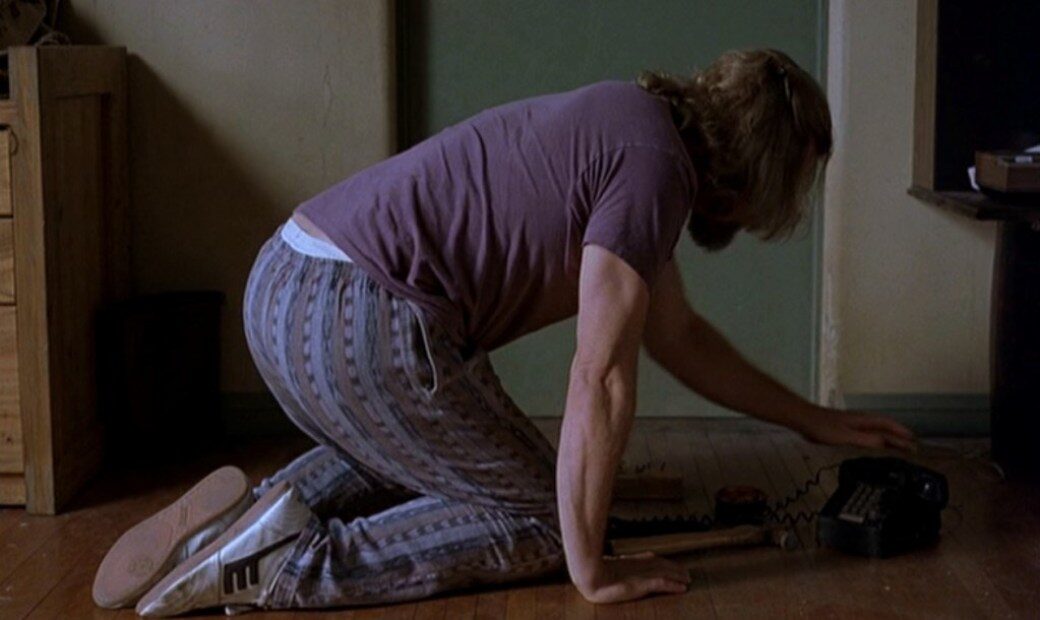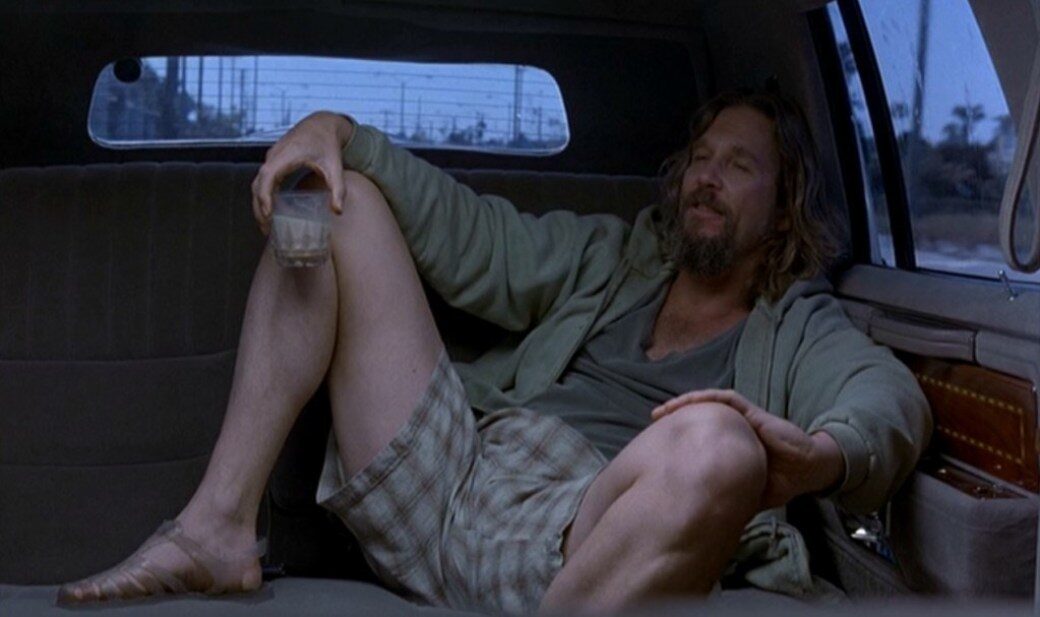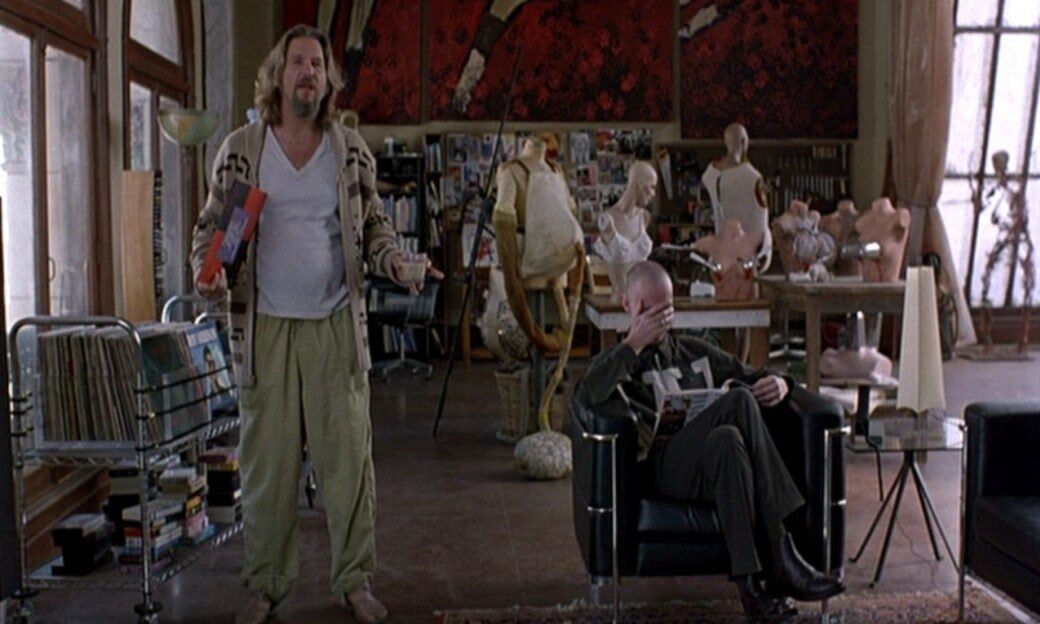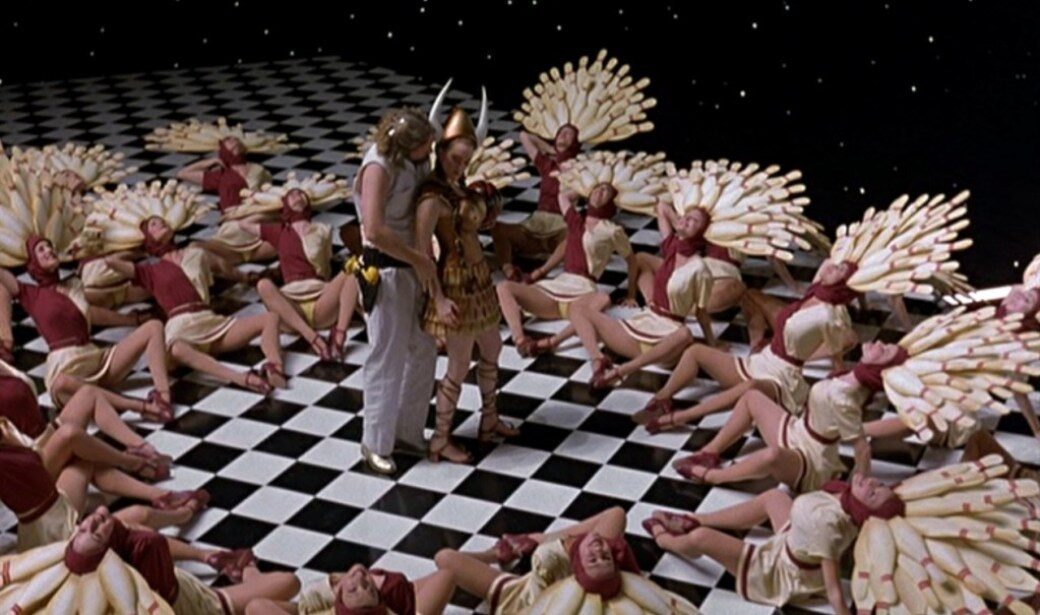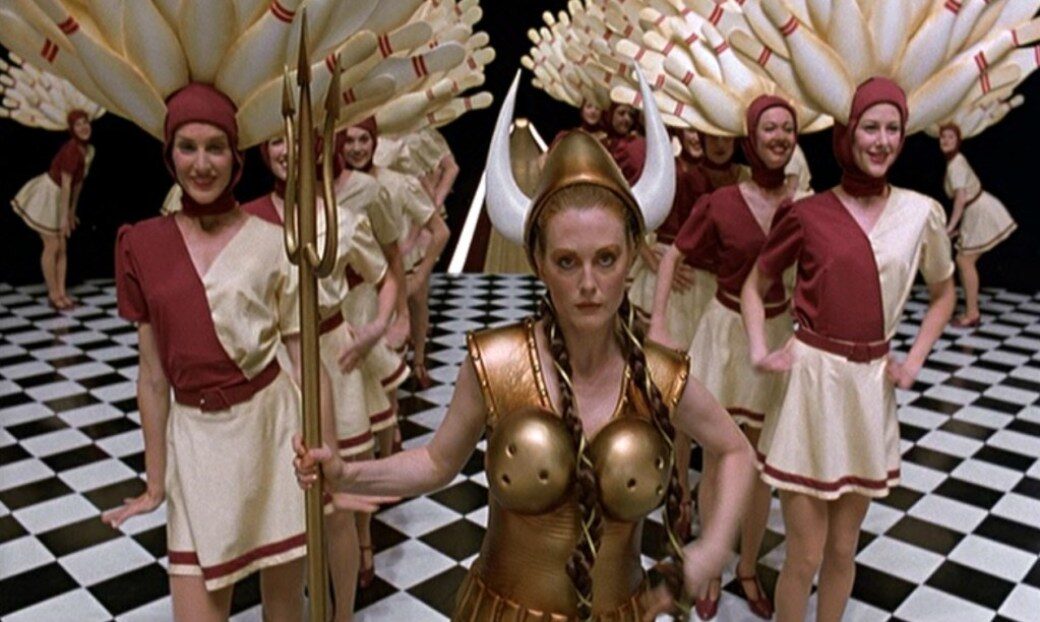Dual Analysis: The Big Lebowski – KB's Thoughts | http://clothesonfilm.net – Part 10994
Part two of a Dual Analysis with KB from FrockTalk.com.
This movie is brilliantly designed in that the characters are concisely and efficiently illustrated. These characters are clearly defined from the beginning, and their costumes tell us exactly who they are from the moment we meet them.
In this sense, they are archetypes, strongly drawn and easily recognized. For a movie as wacky and all over the place as The Big Lebowski, the visual simplicity of these characters helps the audience to stay engaged.
Example: Jeffrey “The Dude” Lebowski. Here is what he wears when we first meet him:
He’s in public, wearing a bathrobe, buying half and half, paying with a check, so he can make some more White Russians. His costume says it all: unemployed, slacker, loser. He looks as though he has long ago thrown in the towel. Throughout the film, The Dude’s costumes do not vary much from this theme, but we will get to that in a minute.
Here’s Walter Sobchak, the first time we meet him:
The fishing vest and collared shirt have a quasi-military vibe, alluding to his time in Vietnam, his PTSD, and his inability to separate himself from “the service”, the rules, the concept of order. The tinted eyeglasses are a throwback, and make him look like a serial killer – this visual element of scariness works well with his short fuse and unpredictable personality.
Here’s the Big Lebowski the first time we meet him:
Buttoned-up, suit, tie, pocket square…in his environment (which looks like Citizen Kane’s Hearst Castle) he is the antithesis of The Dude. The divide is made quite clear in terms of their costumes. The Big Lebowski is a millionaire – conservative, uptight, above reproach, entitled. We see it in his costume. The fact that Teehorn’s men confuse The Dude with the Big Lebowski is insane, given the two completely different worlds in which they operate.
Here’s Bunny the first time we see her:
Yes, wow. Cheese for days. Her costume (hair and makeup) introduces us to the concept of not merely Bunny as a “trophy wife” but also as an unsuitable, dirty, sleazy guttersnipe. This is in direct contrast to the Big Lebowski’s conservative veneer. It’s an unlikely match at best.
Here’s Jesus Quintana (our bowling trio’s mortal enemy) when we first meet him:
I can hardly believe that John Turturro was able to keep a straight face while wearing this. I mean, it is hilarious. The cut of it, the sleekness, the disco-vibe…and then, the horrible color? It’s over the top, but it’s effective. He’s a peacock with a Jheri curl.
Here is Jackie Treehorn when we first meet him:
I thought this costume was really interesting – a white suit (although it is cut well, in the early 1990s, it would have been a Miami Vice throwback) with an untucked red shirt. Wow. And look at the shoes. It’s a cliché of a look, for sure, but I think that in The Dude’s reality, that’s what a guy like Jackie Treehorn is supposed to wear.
And finally, Maude, the first time we meet her, when she puts on her velvet robe:
She looks mysterious, some kind of vintage villain, and yet strangely stark and severe with that sharp haircut. Her accent and mannerisms render her even more surreal.
As you can see, the characters are clearly illustrated, instantly, by their costumes. These archetypes are thoroughly defined (in the visual sense) before we know anything about the character’s story. It’s really brilliant.
Oftentimes in film, we seek to intensify the character’s arc by changing their costumes as they grow/learn/change. This is not the case in The Big Lebowski. It’s fascinating to note that the characters’ costumes really do not change throughout the course of the film. One exception might be Walter, when he accompanies The Dude to drop the briefcase in the desert.
Walter shifts from his normal uniform of shorts/button-front shirt/fishing vest into his old Army uniform (olive-drab BDUs), complete with bandana on his head. This shift signifies his willingness to “get down to business” with these kidnappers, causing them “a world of pain”.
But then the next time we see him, he’s back to his shorts/button-front shirt/fishing vest look.
Walter changes looks one more time, when they go to Little Larry’s house to question him about his Louisiana Purchase homework. Here, Walter tries to look like a detective to gain some credibility:
Going back to The Dude’s costumage, let’s review some of his looks:
The weightlifting pants:
The Jellies sandals:
The Cowichan sweater ensemble:
These are brilliant, brilliant costume choices. They are thoroughly integrated in the character – it never feels like the costume is ‘wearing’ the actor. These costumes look lived in, slept in… fully inhabited. You never doubt for a second that Jeff Bridges is The Dude. It feels totally and utterly real. The Dude’s costumes don’t arc because he remains the same at his core.
The Big Lebowski really is an LA story. I lived here during the early 1990s, and I can attest that these costumes are legit. I knew a lot of people back then that dressed like The Dude, in v-neck t-shirts and weightlifting pants. I shudder to recall it, but it’s true.
Part of me wonders if this film, and all the characters in it, are not seen and interpreted through the lens of The Dude. The film is told in heightened reality, and with hallucinatory sequences and larger than life characters, I can’t help but wonder if the content of the film – the characters, the plot lines, the ‘reality’ of the movie – is somehow told through The Dudes eyes? There are interesting bookends on the film (in voice-over by The Stranger), but it feels to me as if the events are one man’s experience, told through his single perception. And this, of course, influences the costume design.
Which brings me to the dream sequence involving Maude as Brunhilde, The Dude as a repairman, and the bowling-pin headdress girls:
This dream sequence hints to me that the entire film might be The Dude’s singular vision and experience. Universities across this fine land are offering classes in “Dude Studies”, and scholars are publishing books expounding Lebowskian philosophy HERE, HERE and HERE – so maybe someone thusly educated can chime in. Thoughts?
Costume design is an interesting art form. Our job is to realize the director’s vision. So when costumes are perceived as very good, we can hardly take all the credit. Conversely when costumes are perceived as bad, we can hardly take all the blame. In this case, I think the costumes are very very good, and Mary Zophres, her crew, and the Coen brothers all deserve applause. I think that the film and its characters will endure for a long time. The Dude abides.
© 2010 – 2018, Lord Christopher Laverty.
